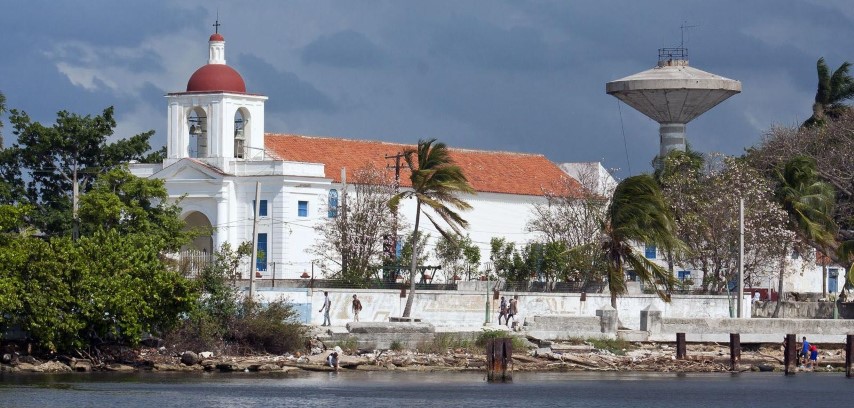There, dreams fill the souls of the first settlers of that town that has abundant magic and stories, and sits on the other side of the Bay of Havana as a precious symbol of Cuba.
They say that a certain Antonio El Peregrino brought the image of the Virgin of Regla, patron saint of the place. First it was an oil painting and then it became an adored silhouette, implanted in the town since the 18th century.
Scenario where a series of names and legends are mixed, such as that of Pedro de Aranda, a traveler, possible messenger who carried the virgin in a boat, or the Bishop of Hippo, born in a place as difficult to find on the map as Tagaste, Africa.
The Bishop, they say, received a divine revelation around the year 436 A.N.E., by means of which he carved in wood the figure of the Virgin of Regla, later preserved in a certain place in America (currently unknown), from where he arrived to Cuba.
Truths or legends, the image is today a strong presence in the hearts of many Cubans, especially of the people from Regla, and in particular in families that profess religions of African origin.
The case was that apart from Christian beliefs, this became, through the imagination of African slaves, Yemayá, goddess of the sea, whose colors are blue and white, and is the mother of the other orishas (deities of African origin). ).
In both religions, the figure takes over Regla and has a fixed silhouette in the hermitage of that place, venerated by Christians and santeros (as the followers of the orishas are called).
Therefore, she rules over her silhouette accompanied by three fishermen, although they cannot be confused with those of the Virgen de la Caridad del Cobre, patron saint of Cuba, syncretized as Ochún for Afro-Cubans.
Either way, Regla is an ideal place to walk, very attractive and interesting for foreigners.
The people of that town hold in high esteem the pride of belonging to that piece of territory, where black shows its indisputable seal since 1687, its founding year.
In 1714, the Virgen de Regla was proclaimed the patron saint of the town. When you disembark, a busy avenue and cobbled streets appear, the most immediate being Sanctuary, where the Hermitage is located, and other points of religious interest.
More than 41,000 people live there, and this fishing village was joined by Casablanca, which took life in the 18th century itself, on the slopes of the colonial fortress of La Cabaña, essential for a traveler to visit and learn about the history of Cuba.
ef/rgh/rfc










